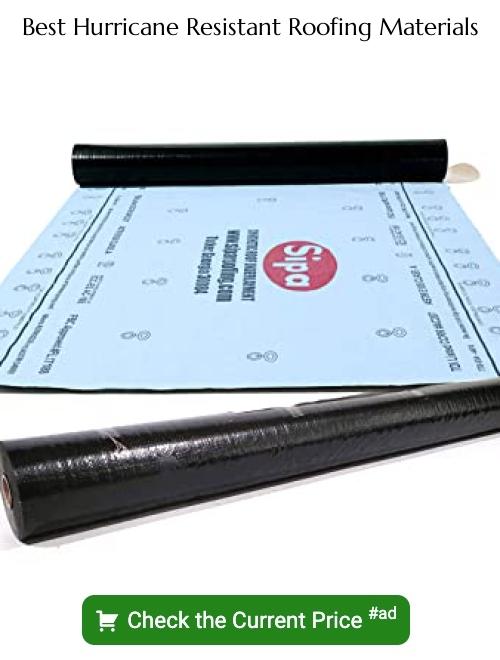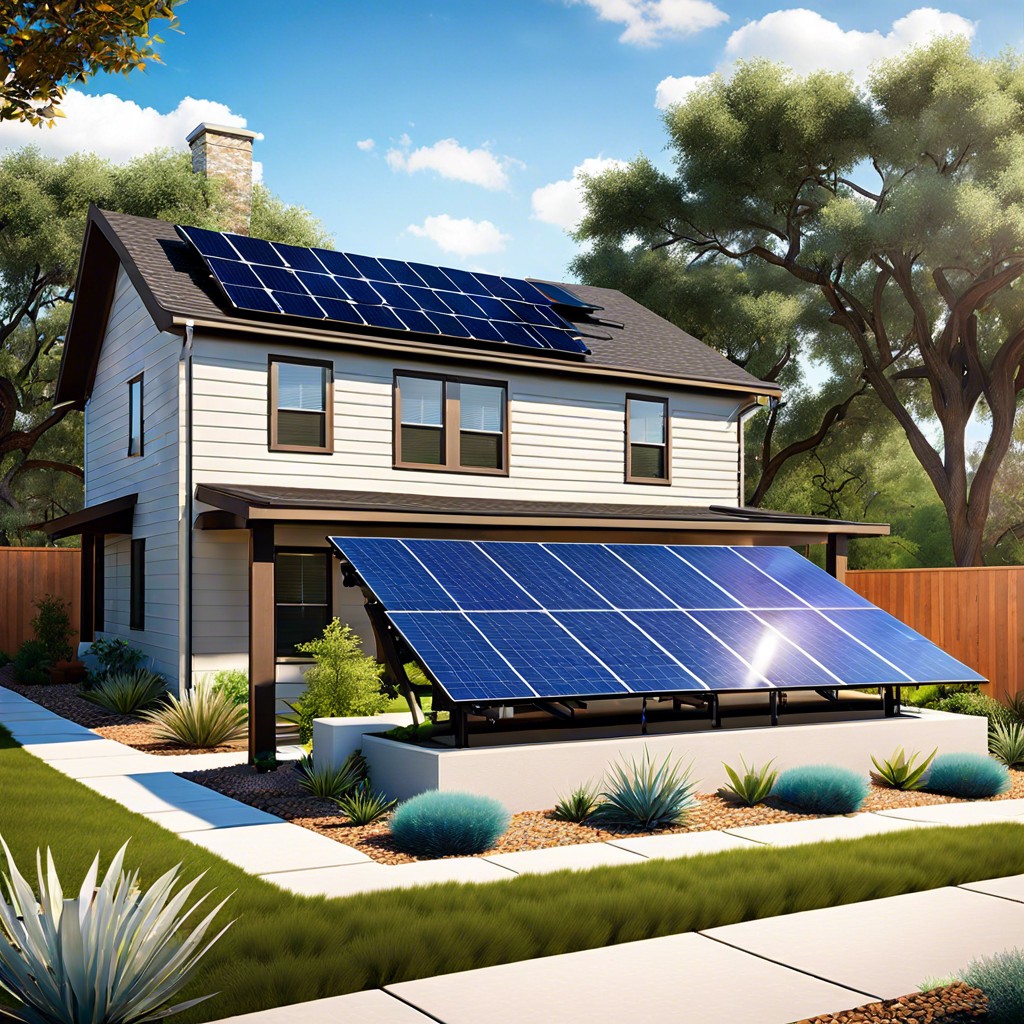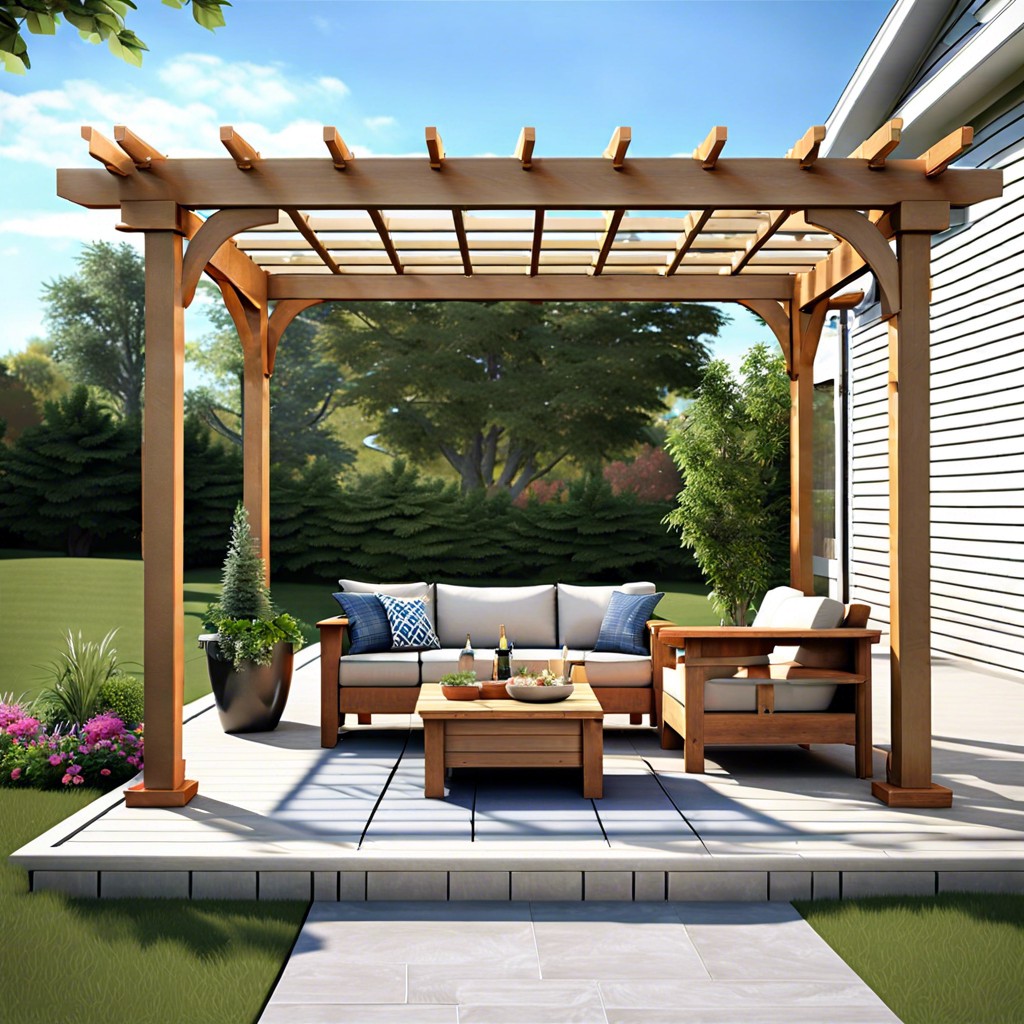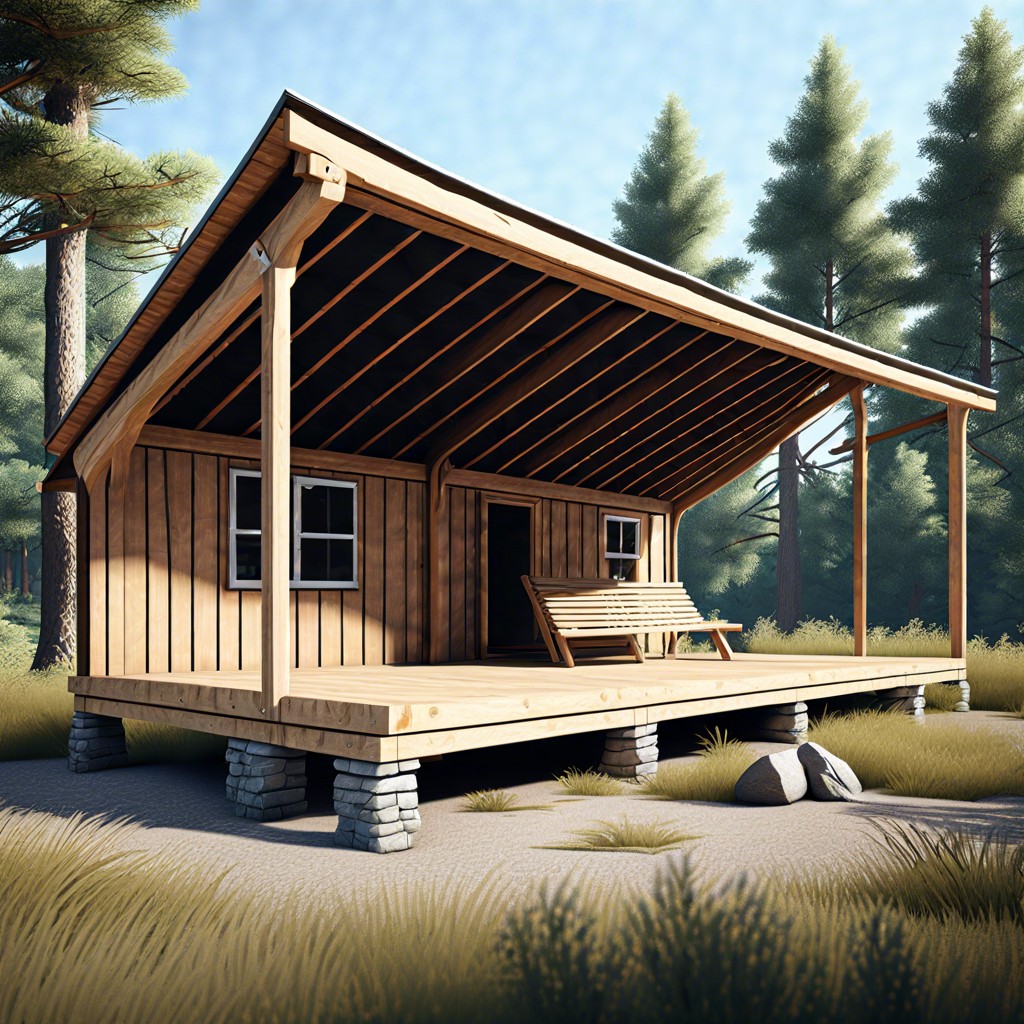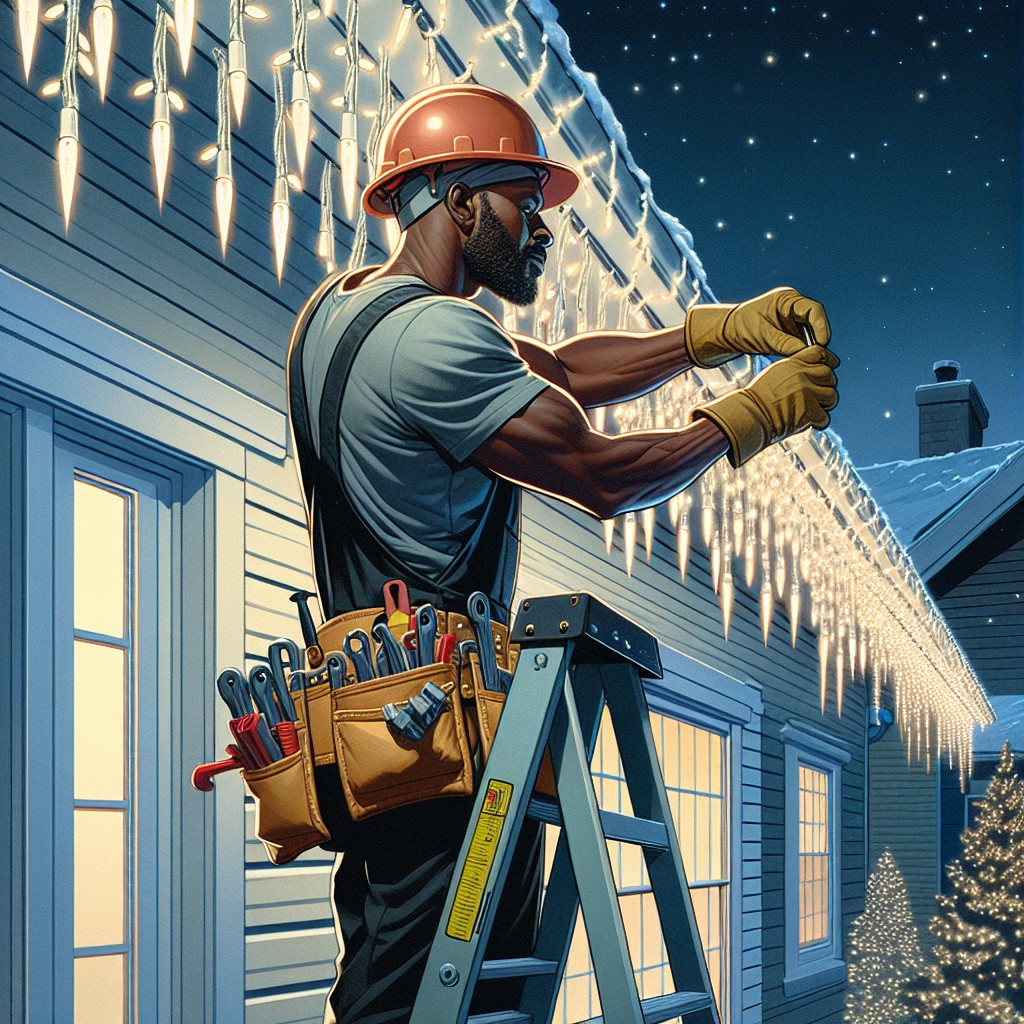Last updated on
Explore innovative hurricane-proof roof design ideas that can help safeguard your home against severe weather conditions.
Hurricane-proof roof design is a crucial consideration for homeowners living in storm-prone areas. It’s not just about picking the right materials, but also about the design and installation process that can significantly enhance your roof’s resilience against high winds and heavy rainfall.
This article will delve into various hurricane-proof roof design ideas, ranging from the shape and angle of your roof, to the selection of appropriate roofing materials, and the use of hurricane straps for added security.
By the end, you’ll have a comprehensive understanding of how to make your roof as hurricane-resistant as possible.
Reinforced Concrete Slabs
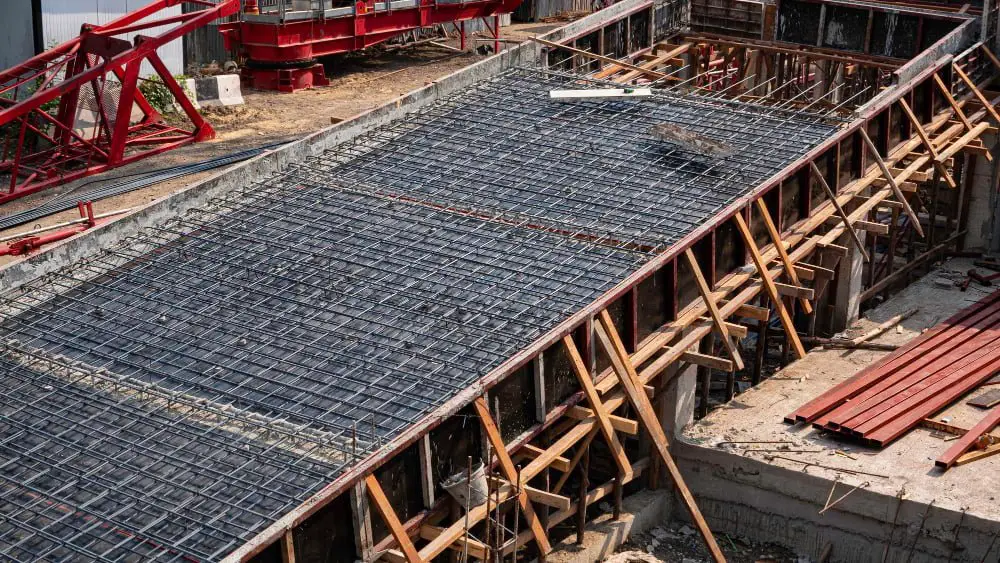
Reinforced concrete slabs are a popular choice for hurricane-proof roof designs due to their exceptional strength and durability.
These slabs are made by pouring a mixture of concrete and reinforcing materials, such as steel bars or wire mesh, into a formwork.
Once cured, the resulting slab forms a solid and stable base for the roof structure.
Reinforced concrete slabs have numerous advantages, including their ability to withstand high winds and resist the impact of flying debris during a hurricane.
Their robust construction helps prevent roof uplift, minimizing the risk of structural damage and providing greater safety and protection.
When designing a hurricane-proof roof, incorporating reinforced concrete slabs can be a vital step towards ensuring its long-term resilience.
Gable End Bracing
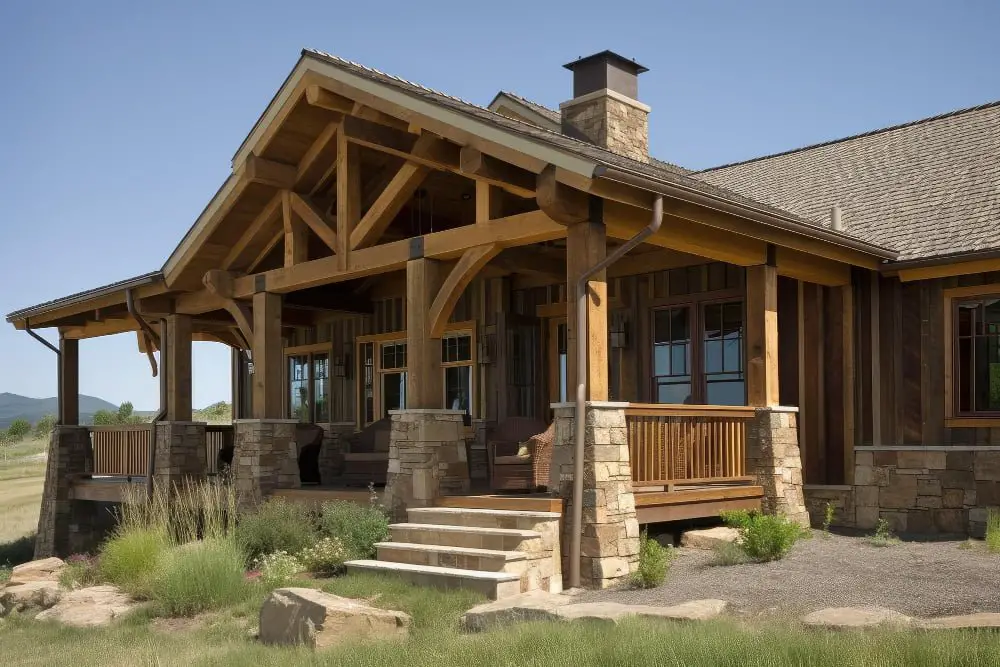
Gable end bracing is an effective design element for creating a hurricane-proof roof. By reinforcing the triangular section of a roof where the gable end is located, the overall structure becomes more resistant to high winds.
Bracing can be accomplished using various methods, such as installing additional framing members or using structural sheathing. The goal is to enhance the rigidity and stability of the gable end to withstand the strong forces exerted by hurricanes and minimize the risk of roof failure.
Gable end bracing is a crucial consideration when designing a hurricane-resistant roof system.
Peel-and-Stick Underlayment
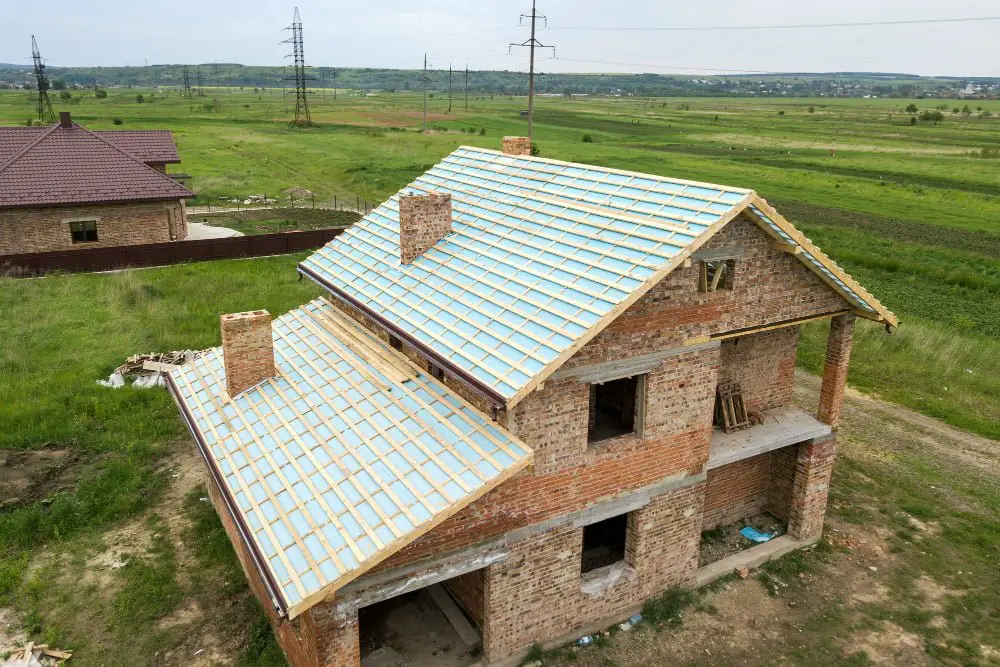
Peel-and-stick underlayment is a popular choice for hurricane-proof roof designs. This self-adhesive membrane provides an extra layer of protection against wind-driven rain and water infiltration.
It is applied directly to the roof deck before the installation of shingles or other roofing materials. Peel-and-stick underlayment adheres tightly to the roof surface, creating a watertight seal. Its unique self-sealing properties help prevent leaks, even under extreme weather conditions.
The use of peel-and-stick underlayment is recommended in hurricane-prone areas to enhance the overall durability and resilience of the roof.
Wind-Resistant Shingles

Wind-Resistant Shingles:
When it comes to safeguarding your roof against hurricanes and strong winds, opting for wind-resistant shingles is a wise choice. These shingles are specifically engineered to withstand high-speed winds and minimize the risk of damage during storms.
Wind-resistant shingles are typically manufactured with reinforced asphalt and have features such as interlocking tabs and adhesive strips that help keep them firmly in place. They are designed to create a tight seal that can resist wind uplift and prevent water infiltration.
With wind ratings that can exceed 130 mph, these shingles provide an added layer of protection for your home, ensuring the integrity of your roof even in the face of powerful hurricanes.
By opting for wind-resistant shingles, you can have peace of mind knowing that your roof is better equipped to weather the storm and protect your home and loved ones.
Metal Roofing
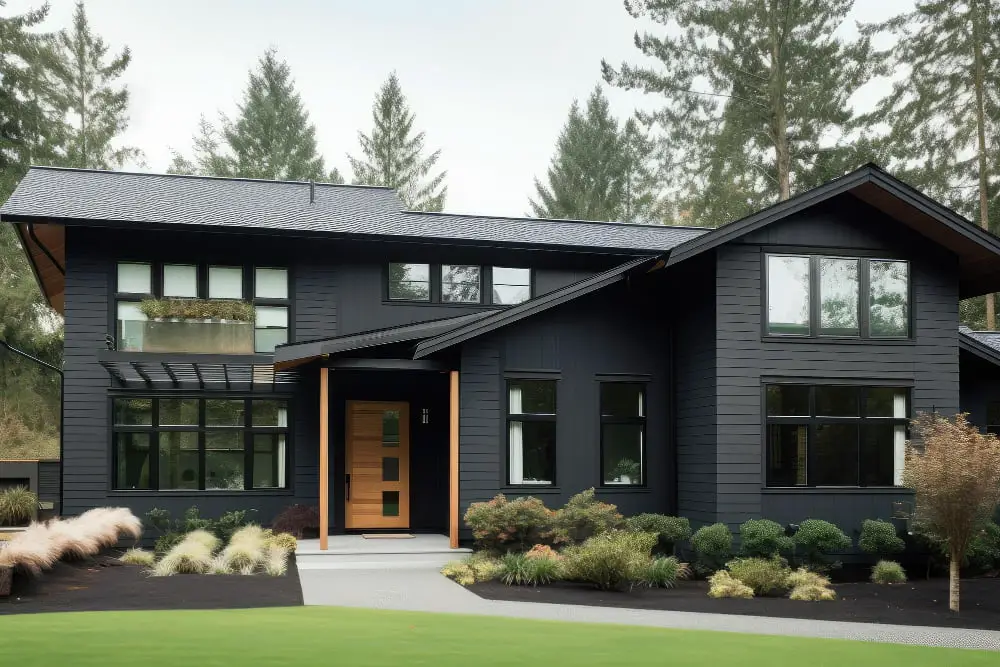
Metal roofing is an excellent choice for hurricane-proof roof design. Its durability, resilience, and longevity make it a top contender for areas prone to high winds and severe weather conditions.
Metal roofs have fantastic wind resistance, with some systems being able to withstand winds of up to 150 miles per hour. The interlocking panel design of metal roofs provides exceptional strength and prevents wind-driven rain from infiltrating the structure.
Additionally, metal roofs are non-combustible, which provides an added layer of safety during wildfires or lightning strikes. Their low weight compared to other roofing materials also helps reduce the risk of structural damage during hurricanes.
Metal roofing comes in various styles, including classic standing seam, metal shingles, and metal tiles, offering homeowners both aesthetic appeal and functional protection.
When properly installed with manufacturer-approved details and with attention to proper fastening and sealing techniques, metal roofs provide a reliable barrier against hurricanes and severe storms.
High-Pitch Roofs

A high-pitched roof is an effective design idea for hurricane-proofing your home. The steep angle helps to reduce the wind’s impact on the roof, allowing it to withstand strong winds and prevent lift-off. The high pitch also promotes better water runoff during heavy rain, minimizing the risk of leaks or water damage.
Additionally, the increased slope provides better stability, making high-pitch roofs more resistant to structural damage caused by hurricanes. Consider opting for a high-pitched roof when planning your hurricane-resistant design to enhance the overall durability and protection of your home.
Roof-to-Wall Connections
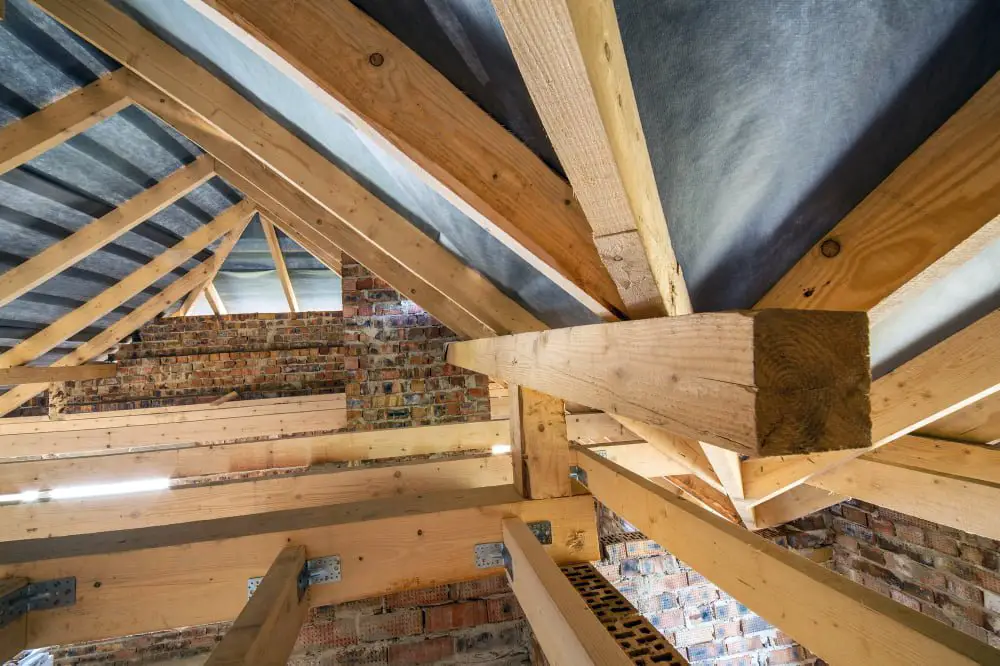
Proper roof-to-wall connections play a crucial role in making a roof more hurricane-proof. These connections help to strengthen the overall structure and prevent the roof from being lifted or separated during high winds.
One effective method is the use of hurricane straps or metal connectors, which are installed to secure the roof trusses or rafter ends to the wall framing. By integrating these connectors into the construction process, the roof becomes more resistant to the powerful forces generated by hurricanes.
Implementing strong roof-to-wall connections is an essential step in ensuring the integrity and safety of a home or building during severe weather conditions.
Secondary Water Barrier
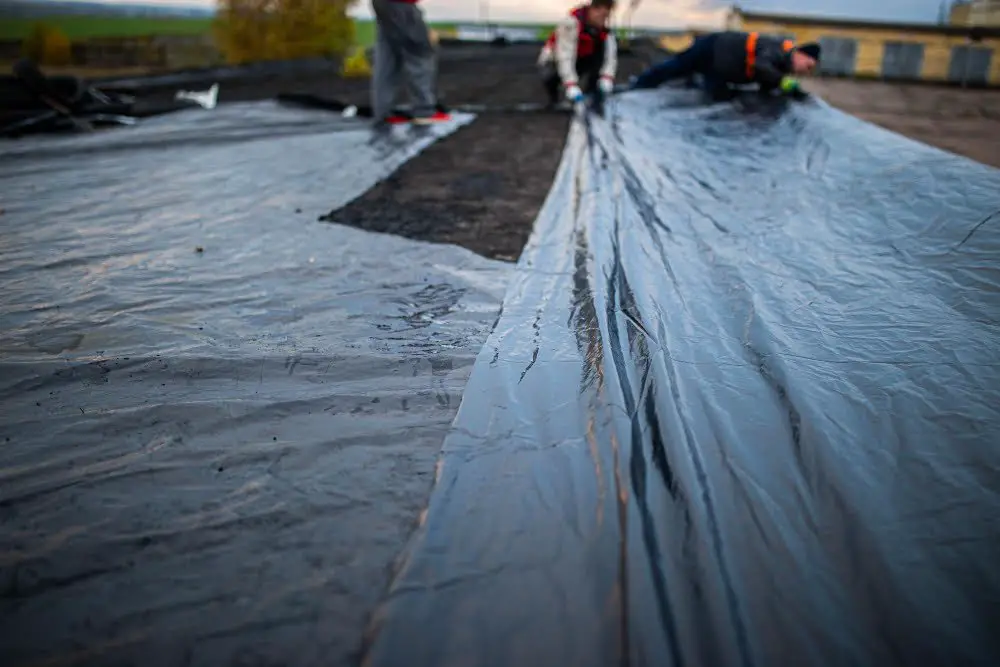
A secondary water barrier is a crucial component in designing a hurricane-proof roof. It acts as an additional layer of protection against water intrusion during high winds and heavy rainfall.
This barrier is typically installed beneath the roof covering, such as the shingles or metal panels. It helps prevent water from seeping into the underlying layers, which can lead to costly damage and the potential for mold growth.
Common types of secondary water barriers include self-adhering underlayments, synthetic underlayments, and rubberized asphalt membranes. These materials provide an extra level of waterproofing and ensure the roof remains watertight even in the face of severe weather conditions.
Incorporating a secondary water barrier into the roof design is a wise investment to enhance the overall durability and resilience of your roof.
Hurricane Straps
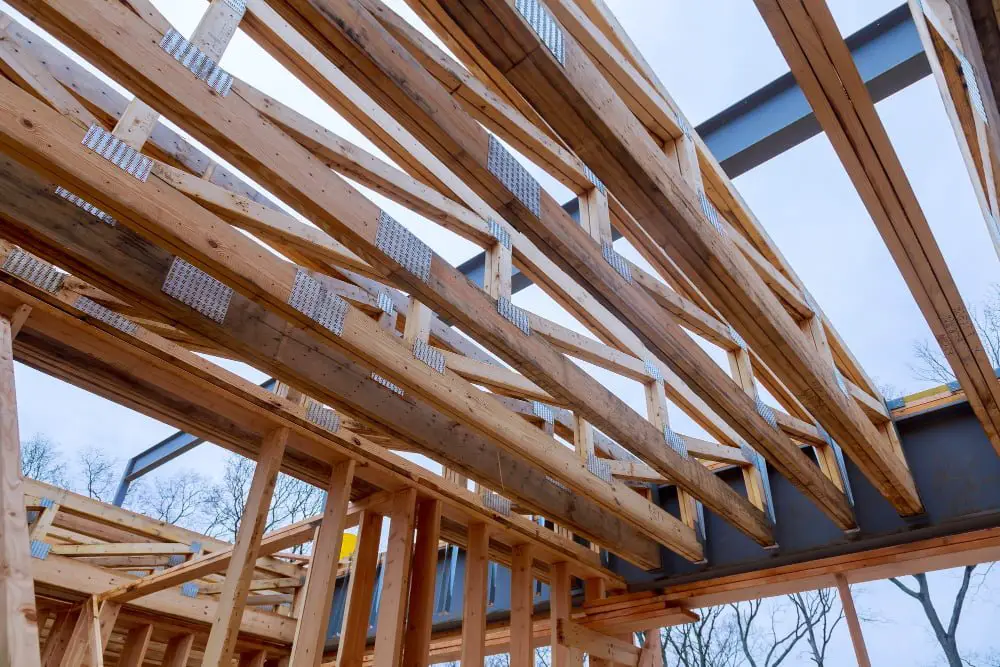
Hurricane Straps:
One crucial component of a hurricane-proof roof design is the use of hurricane straps. These straps, also known as roof tie-downs or hurricane clips, provide additional reinforcement by connecting the roof structure to the walls of the building. They are typically made of galvanized steel or other strong materials that can withstand extreme winds.
Hurricane straps greatly enhance the overall structural integrity of a roof. By securing the roof system to the walls, they help distribute the forces of high winds and reduce the risk of the roof being uplifted or torn off during a hurricane. The straps are installed at strategic points along the roof trusses or rafters and fastened securely to the wall framing.
It’s essential to ensure that hurricane straps are installed correctly, adhering to building codes and manufacturer guidelines. Professional installation by qualified roofing experts is highly recommended to guarantee their effectiveness. Additionally, when incorporating hurricane straps into a roof design, it is crucial to consider the specific requirements and wind loads of the region where the building is located.
Investing in hurricane straps is a proactive measure that can help protect homes and buildings from the devastating impact of hurricanes. By securely anchoring the roof structure, these straps provide peace of mind and contribute to the overall resilience and safety of the property.
Impact-Resistant Skylights
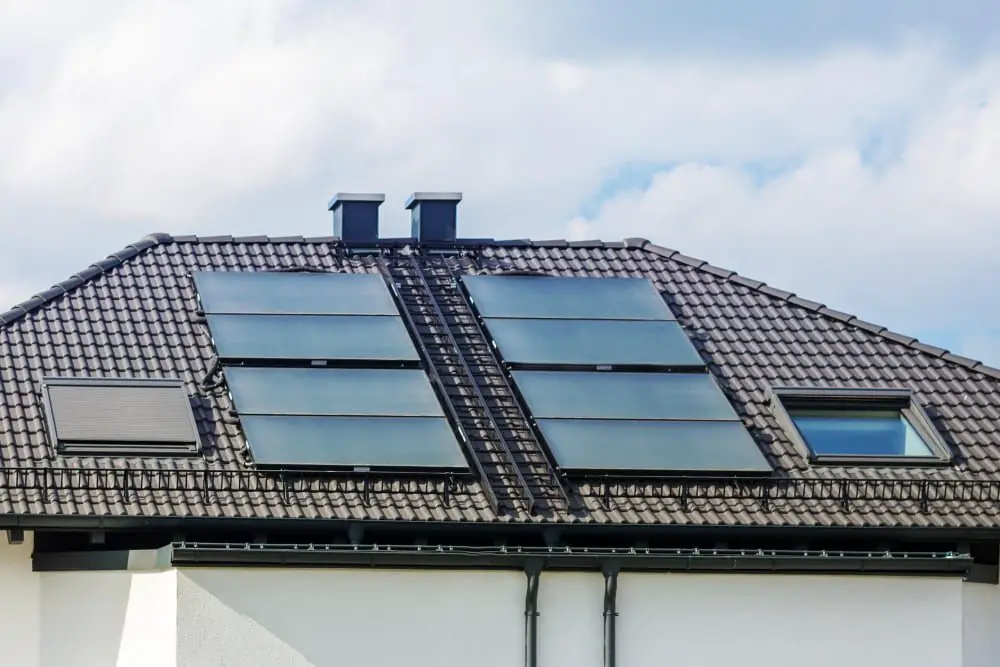
Impact-Resistant Skylights:
When it comes to hurricane-proof roofing, impact-resistant skylights are a must-have feature. Skylights are not only a source of natural light but also add aesthetic appeal to a home. However, during a hurricane or severe storm, standard skylights can be vulnerable to damage from flying debris or high winds.
Impact-resistant skylights are specifically designed to withstand the forces of nature. They are constructed using reinforced glass or polycarbonate materials, which are highly resistant to impacts. These skylights undergo rigorous testing to ensure they meet industry standards for hurricane resistance.
The reinforced glass or polycarbonate used in impact-resistant skylights is typically thicker and stronger than the materials used in standard skylights. This added strength prevents shattering or penetration by debris, providing an extra layer of protection for your home during extreme weather events.
Additionally, impact-resistant skylights are also designed to withstand high wind pressures. They have secure frames and weather seals that prevent water intrusion and air leakage. This ensures that your skylights remain intact and functional, even in the face of strong winds and heavy rainfall.
Investing in impact-resistant skylights not only increases the safety and durability of your roof but also reduces the risk of potential damage and costly repairs. By choosing these skylights, you can enjoy the benefits of natural light without compromising the integrity of your hurricane-proof roof.
Hip Roofs
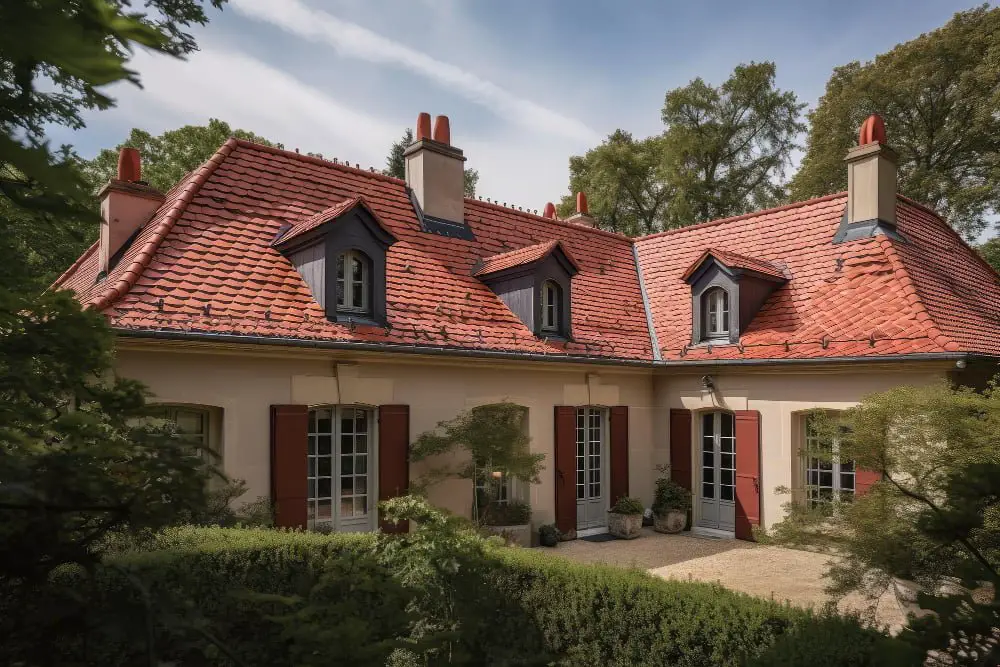
Hip roofs are an effective design choice for hurricane-proof roofs. Unlike gable roofs that have two slopes meeting at a center ridge, hip roofs have slopes on all sides. This design helps to distribute wind pressure evenly, making them more resistant to strong winds.
Hip roofs also have a smaller surface area exposed to the wind, reducing the chances of uplift and damage. The overhangs of a hip roof can also provide additional protection to the walls and windows of a house during a hurricane.
When combined with proper bracing and quality roofing materials, hip roofs can significantly increase the structural integrity of a home in hurricane-prone areas.
Reinforced Roof Sheathing
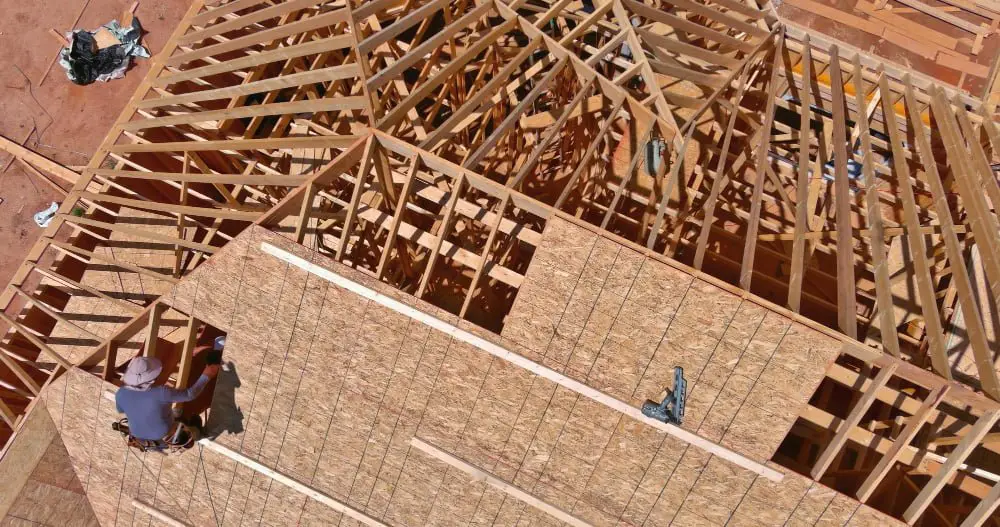
Reinforced roof sheathing is a critical element in creating a hurricane-proof roof design. It involves strengthening the layers of material that make up the roof deck to withstand high winds and weather impacts.
Reinforced roof sheathing is typically achieved by using materials such as plywood or oriented strand board (OSB) with added layers or coatings to enhance strength and durability.
The primary benefit of reinforced roof sheathing is its ability to resist uplift forces during hurricanes or other severe storms. By reinforcing the roof deck, it helps distribute the wind load evenly across the structure, minimizing the risk of damage and potential for roof failure. This added strength acts as a protective layer, safeguarding the entire roofing system and the home beneath it.
To reinforce roof sheathing, one common method is to apply an additional layer of plywood or OSB to the existing deck, creating a double-layered, or “sandwiched,” configuration. Another approach involves using engineered wood or composite panels that are specifically designed to resist wind loads and enhance overall roof performance.
It’s important to consult with a qualified roofing professional when considering reinforced roof sheathing as part of a hurricane-proof design. They can assess the specific needs of your location and recommend the ideal materials and installation techniques for your roof. By investing in reinforced roof sheathing, you’ll be taking proactive measures to fortify your home against the destructive forces of hurricanes and other extreme weather events.
Adequate Soffit Venting
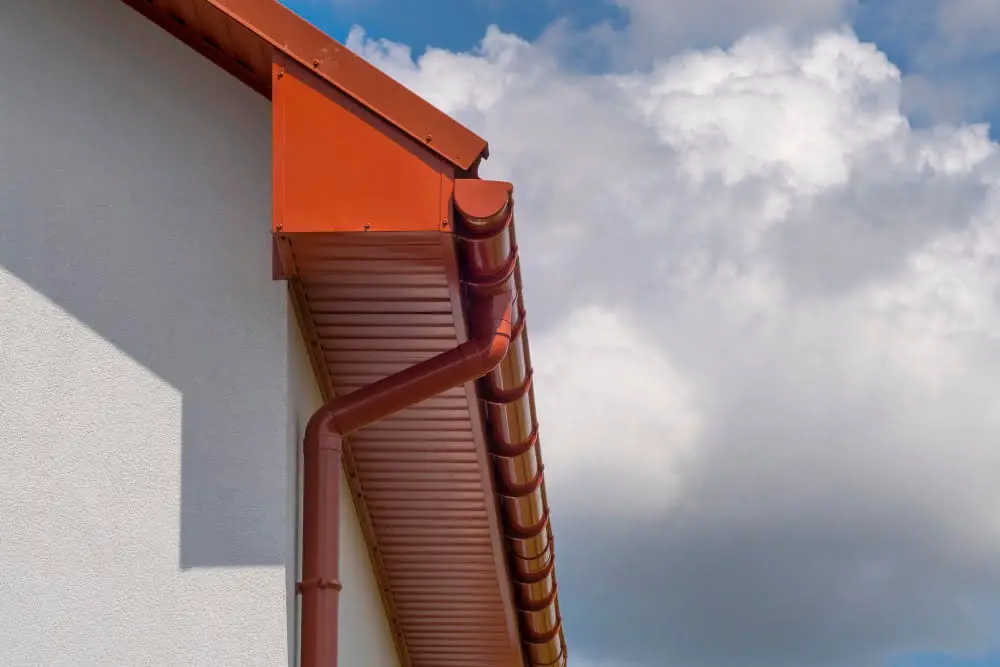
Adequate Soffit Venting:
Proper ventilation is a crucial element in a hurricane-proof roof design. Adequate soffit venting plays a significant role in ensuring the longevity and stability of the roof during a hurricane. Soffit vents are installed along the underside of the eaves, allowing fresh air to enter the attic space, while hot, moist air is expelled through the roof vents.
During a hurricane, powerful winds can create significant pressure differences on the roof, leading to structural damage. Without proper ventilation, this pressure can build up in the attic, causing the roof to lift or even collapse. Adequate soffit venting helps equalize this pressure, reducing the risk of damage and maintaining the roof’s integrity.
By allowing air circulation, soffit vents also help prevent moisture buildup and condensation in the attic, which can lead to mold, rot, and decay. Additionally, proper ventilation helps regulate attic temperatures, preventing the excessive heat buildup that can cause shingles to deteriorate prematurely.
To ensure sufficient soffit venting, it is essential to have the right balance between intake (soffit) and exhaust (roof) vents. Consulting with a professional roofing contractor can help determine the appropriate venting system for your specific roof design and climate conditions. Properly designed and installed soffit venting is a small yet crucial step towards creating a hurricane-resistant roof that can withstand the onslaught of nature’s fury.
Tapered Insulation Systems
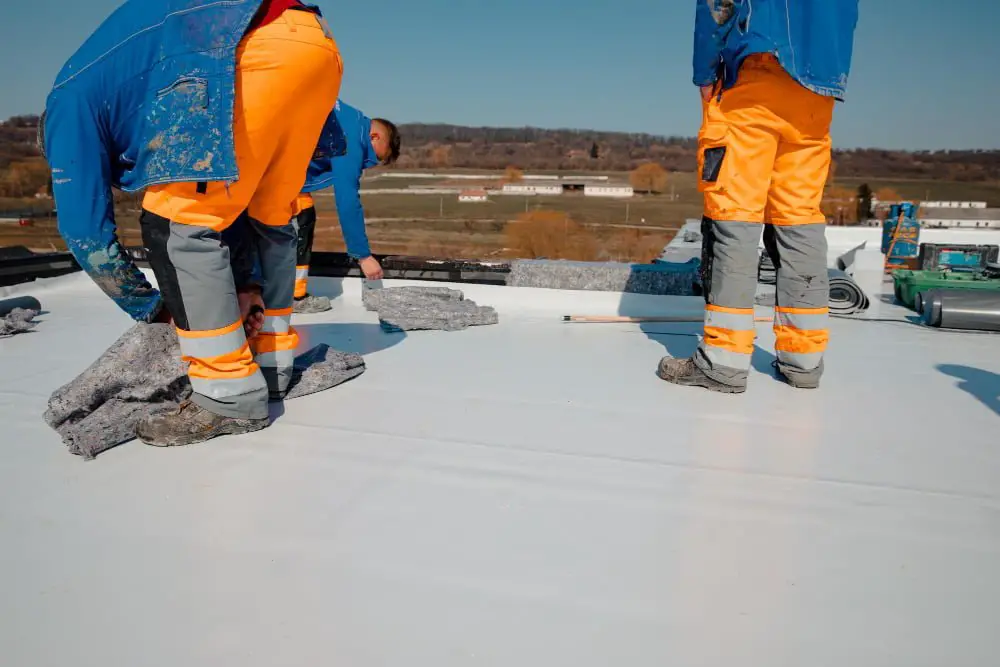
Tapered insulation systems are a crucial component in creating a hurricane-proof roof design. These systems are designed to provide slope or taper to the roof surface, allowing for proper drainage of rainwater and preventing ponding.
By ensuring effective water runoff, tapered insulation systems help protect the roof from excessive moisture and potential damage during hurricanes. This proactive approach contributes to the overall structural integrity of the roof, making it more resilient and better equipped to withstand strong winds and heavy rains.
Additionally, tapered insulation systems can help improve energy efficiency by enhancing thermal performance and reducing heat loss. When properly installed, these systems offer an effective solution for ensuring a durable and hurricane-resistant roofing system.
Built-Up Roofs
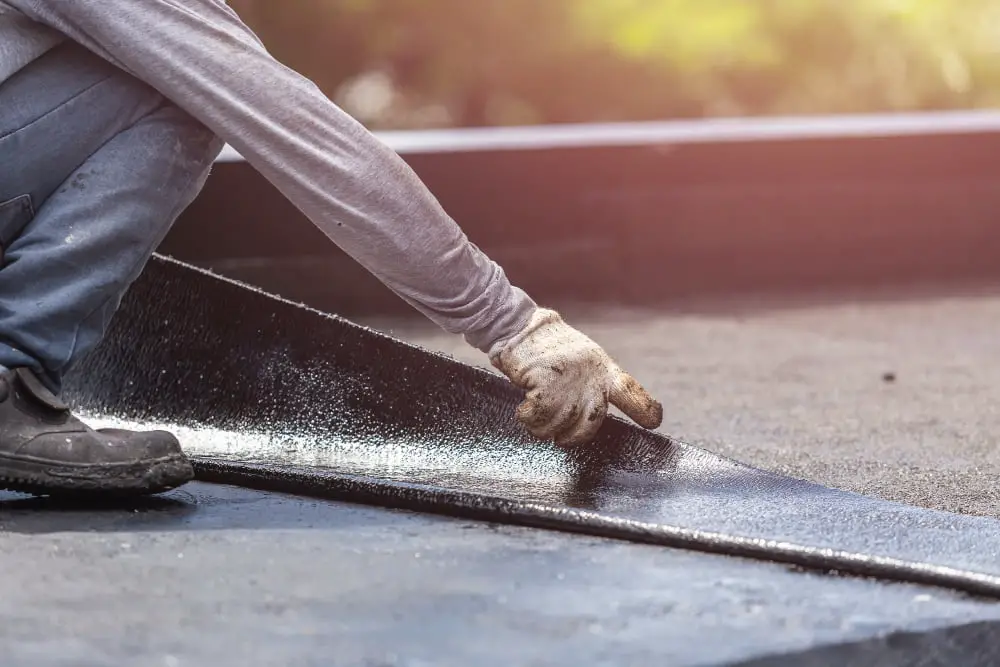
Built-Up Roofs:
Built-up roofs, also known as BURs, are a popular hurricane-proof roofing option. They consist of multiple layers of asphalt and felt, creating a durable and waterproof surface.
The strength and resiliency of built-up roofs make them resistant to high winds and flying debris often associated with hurricanes. Additionally, the multiple layers provide excellent insulation and thermal protection, keeping homes cool during hot weather and reducing energy costs.
BURs require professional installation due to their complex nature, but their long lifespan and ability to withstand extreme weather conditions make them a worthwhile investment for hurricane-prone areas.
Truss Bracing Systems
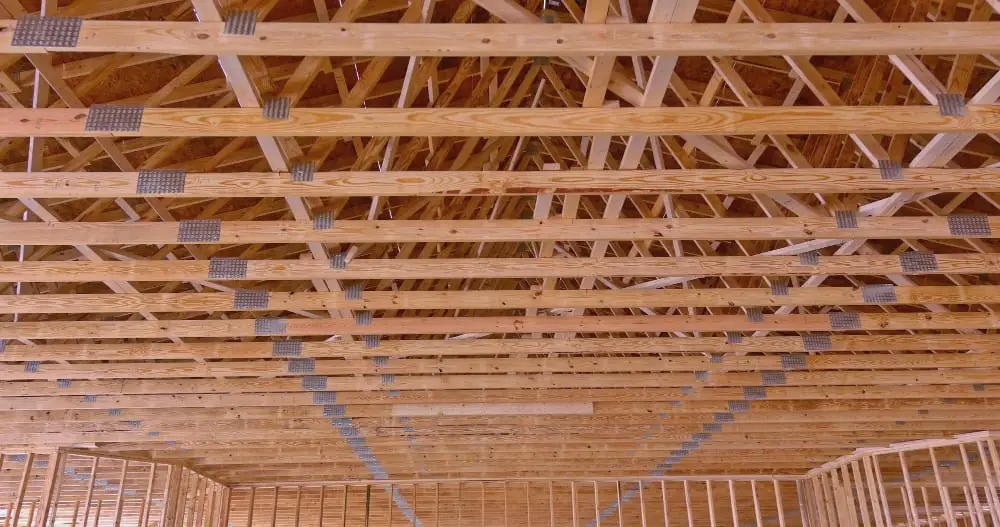
Truss bracing systems play a crucial role in making a roof more resistant to hurricanes. These systems involve adding additional support to the roof trusses, which are the structural framework of the roof.
By reinforcing the trusses with bracing, it helps to distribute the load more evenly during high winds, reducing the risk of the roof being lifted or collapsing under pressure.
Truss bracing systems can include diagonal bracing, portal frames, or roof trusses designed with integrated bracing. Implementing these systems ensures that the roof can better withstand the strong lateral forces exerted by hurricanes.
It is important to consult with a professional to determine the most suitable truss bracing system for your specific roof design and location.
Roof-Over Designs
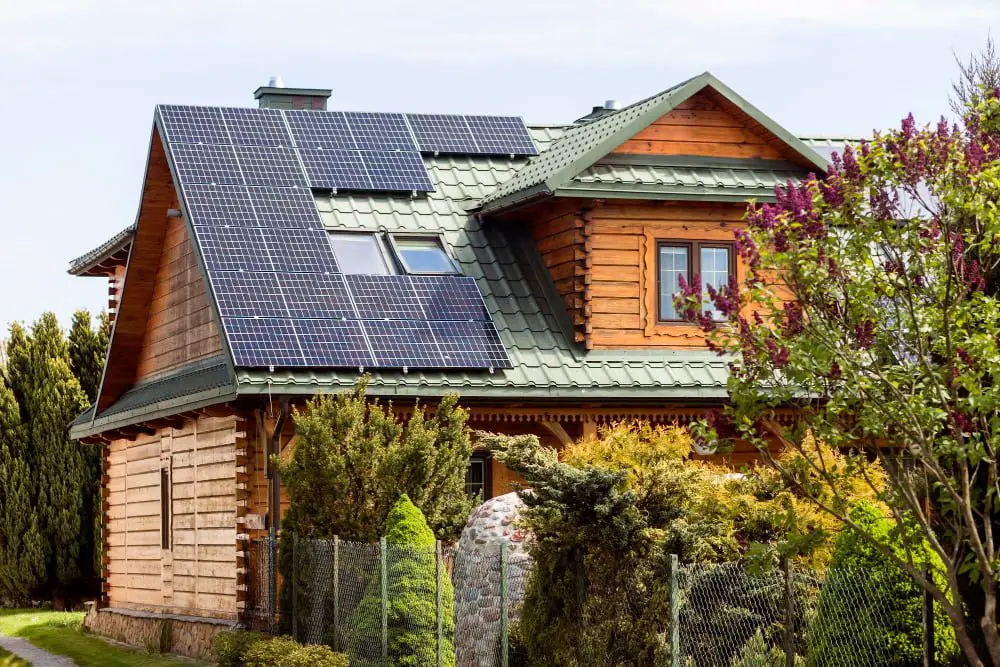
Roof-Over designs offer an effective solution for strengthening your roof against hurricane force winds.
This method involves installing a new layer of roofing over the existing one, providing an extra layer of protection.
By adding this additional layer, the roof becomes more resistant to wind penetration and uplift.
Roof-overs can incorporate various materials such as metal, asphalt shingles, or even specialized hurricane-resistant systems.
This approach not only reinforces your roof structure but also provides an opportunity to improve insulation and enhance energy efficiency.
Consulting with a professional roofing contractor is crucial to ensure that the roof-over design is properly engineered and installed to withstand hurricane conditions.
Insulated Concrete Forms
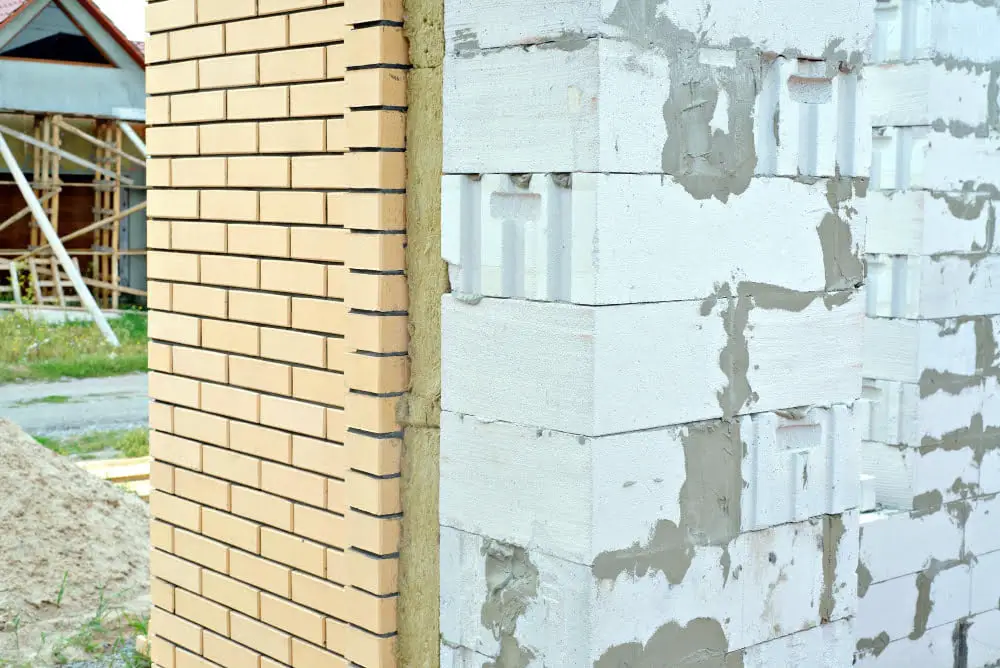
Insulated Concrete Forms (ICFs) are a popular choice for hurricane-proof roof designs. These forms consist of interlocking foam panels that are reinforced with steel rebar and then filled with concrete. The result is a solid, durable structure that offers excellent thermal insulation.
ICFs provide exceptional resistance against high winds and can withstand the impact from flying debris during hurricanes. The sturdy construction and reinforced materials make them less susceptible to damage and can significantly reduce the risk of roof failure.
In addition to their hurricane-resistant qualities, ICFs also offer energy efficiency benefits. The insulating properties of the foam panels provide a barrier against heat transfer, minimizing energy loss and helping to maintain a comfortable indoor temperature year-round.
When it comes to roof design, using ICFs ensures a robust and resilient structure that can withstand the severe conditions of a hurricane. From their resistance to wind and flying debris to their insulation capabilities, ICFs provide a reliable option for homeowners seeking a hurricane-proof roof solution.
Wind-Resistant Roof Coatings
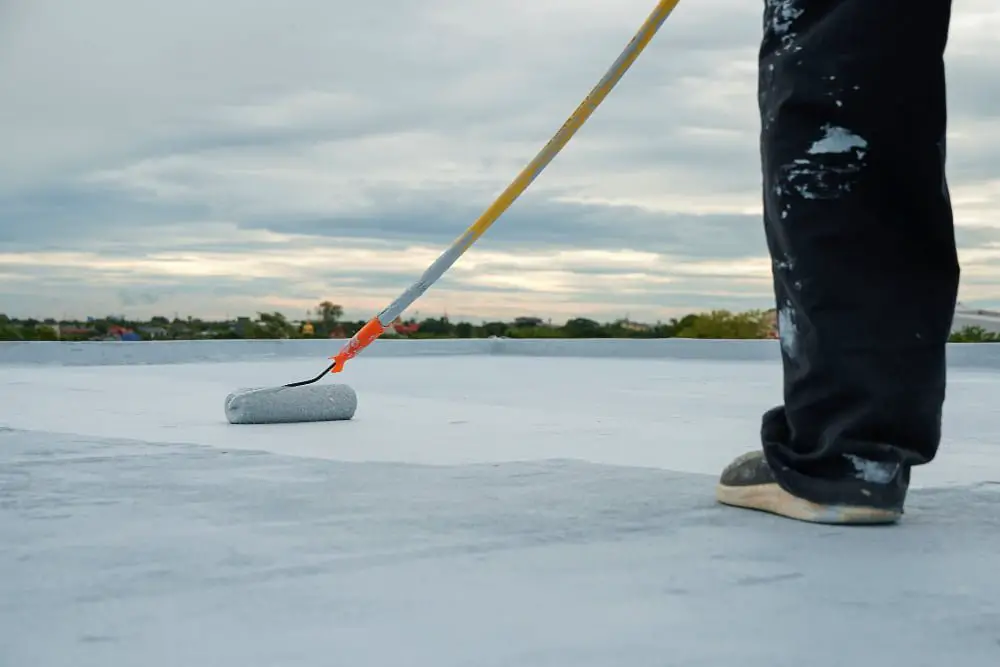
Wind-Resistant Roof Coatings:
Applying a wind-resistant roof coating is an effective way to enhance the durability of your roof and protect it against hurricane-force winds. These coatings are specially designed to create a seamless and flexible membrane that adheres tightly to your roof surface. They act as a protective barrier, strengthening your roof’s resistance to wind uplift and preventing water infiltration.
Wind-resistant roof coatings are typically made from elastomeric materials that provide excellent flexibility and durability. They can expand and contract with temperature changes, ensuring long-lasting performance. These coatings are also UV resistant, helping to protect your roof from harsh sun rays and extending its lifespan.
When applied correctly, wind-resistant roof coatings create a smooth and continuous surface that minimizes the risk of wind damage. They can be particularly beneficial for flat or low-slope roofs, which are more prone to wind uplift. By choosing a high-quality wind-resistant coating and having it professionally installed, you can significantly enhance your roof’s ability to withstand hurricane-force winds and protect your home or business from potential storm damage.
Structural Sealed Roof Decks
Structural sealed roof decks are becoming increasingly popular in hurricane-prone areas due to their exceptional strength and resilience. These decks consist of a solid and waterproof substrate, typically made of concrete or reinforced sheathing, that offers superior protection against wind uplift and water infiltration.
One significant advantage of structural sealed roof decks is their ability to provide a continuous and secure attachment for the roofing materials. By eliminating seams or gaps, they minimize the risk of wind-driven water penetrating the roof system during a hurricane. This not only safeguards the structural integrity of the roof but also protects the interior of the building from water damage.
Additionally, structural sealed roof decks enhance the overall strength of the roof system, making it more resistant to strong winds and debris impact. The solid substrate helps distribute the forces exerted on the roof evenly, reducing the likelihood of damage and potential collapse under extreme weather conditions.
It is worth noting that the installation of a structural sealed roof deck should be performed by experienced professionals to ensure its proper construction and performance. Permitting and code requirements may vary based on the location, so it’s crucial to consult with local building officials or a qualified roofing contractor who is knowledgeable about hurricane-resistant construction practices.
Investing in a structural sealed roof deck provides homeowners with peace of mind during hurricane events. This robust and reliable roofing option offers increased protection against high winds and water infiltration, making it an excellent choice for those looking for hurricane-proof roof designs.
